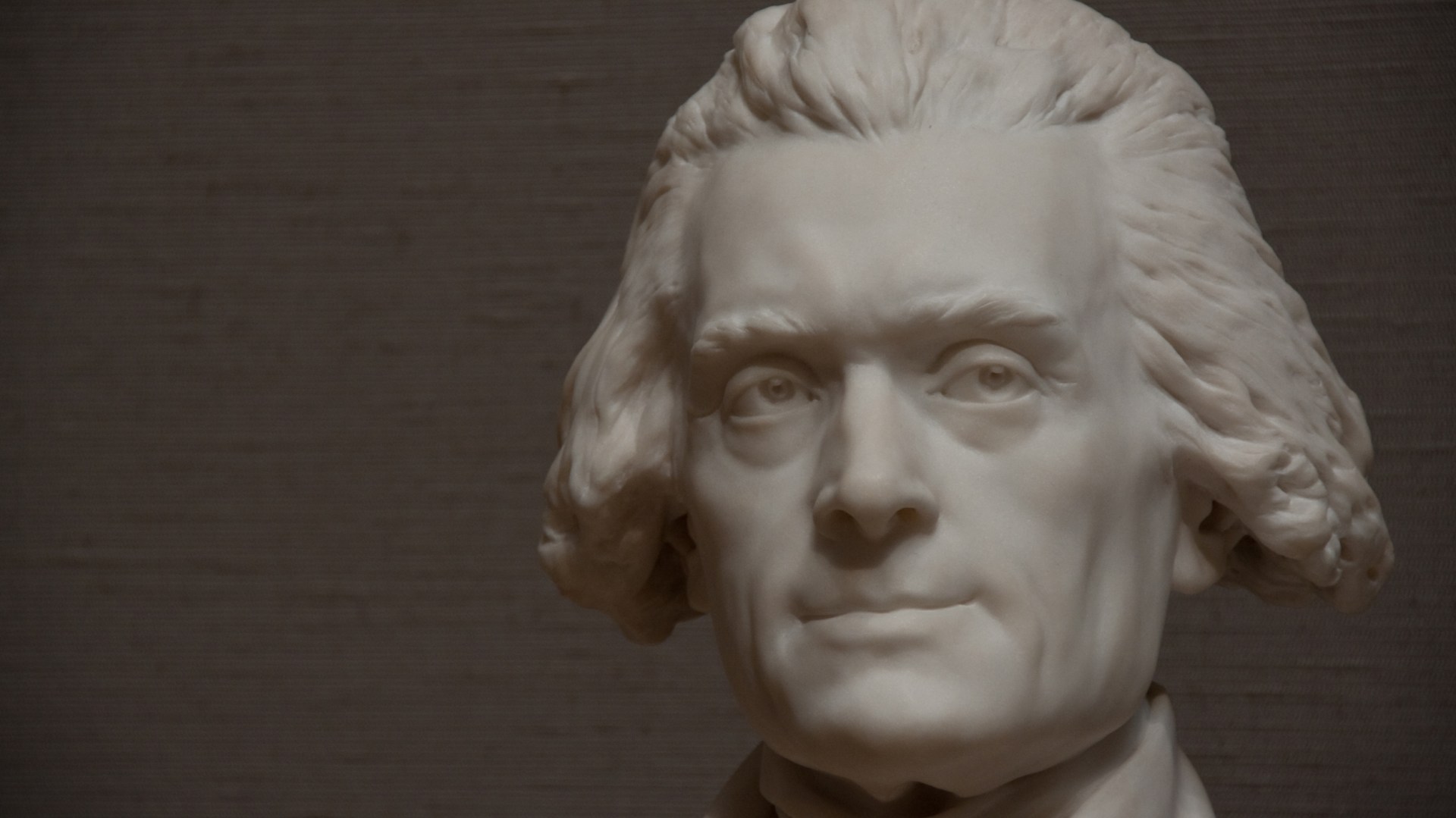In a previous article, Daniel Dreisbach told the story of how the bitterly contested election of 1800 brought the question of religion's place in civic life to the forefront and provided the backdrop to Jefferson's phrase "a wall of separation between Church & State." This week he raises the provocative question: Was Jefferson correct to say the First Amendment built a "wall of separation"? Or does the modern Court's use of this famous metaphor actually distort our understanding of the First Amendment?
"Congress shall make no law respecting an establishment of religion, or prohibiting the free exercise thereof." Many Americans believe that these 16 words from the U.S. Constitution's First Amendment built a "wall of separation" between church and state. The media, academics, and even the U.S. Supreme Court frequently reinforce this notion.
Does the Constitution, in fact, erect a "wall of separation"? More important, does it matter that this wall has become so influential in American law and policy?
On New Year's Day, 1802, President Thomas Jefferson wrote a letter to the Baptist Association of Danbury, Connecticut, endorsing the persecuted Baptists' aspirations for religious liberty. The First Amendment, he wrote, denied Congress the authority to establish a religion or prohibit its free exercise, "thus building a wall of separation between Church & State."
In 1947, the U.S. Supreme Court "rediscovered" Jefferson's metaphor: "In the words of Jefferson," the justices declared, the First Amendment "erect[ed] 'a wall of separation between church and State' … [that] must be kept high and impregnable. We could not approve the slightest breach." This landmark ruling in Everson v. Board of Education had enormous repercussions for the role of religion in public life. The Court, it would seem, sought to legitimate its decision in this case by appealing to a giant figure in American history. The Jeffersonian metaphor may be the Court's most celebrated use of history in contemporary jurisprudence. It is, in fact, a misuse of history because Jefferson's "wall" misrepresents constitutional principles in several important ways.
First, Jefferson's metaphor emphasizes separation between church and state—unlike the First Amendment, which speaks in terms of the non-establishment and free exercise of religion. Jefferson's Baptist correspondents, who agitated for disestablishment (the elimination of an official "state church") but not for separation, were apparently discomfited by the figurative phrase. They, like many Americans, feared that the erection of a wall would separate religious influences from public life and policy. Few evangelical dissenters challenged the widespread assumption of the age that a self-governing people must be a moral people and that morals can be nurtured only by the Christian religion. They believed religion was an indispensable support for civic virtue and political prosperity, and its separation from public life necessarily imperiled social order and stability.
Second, a wall is a bilateral barrier that inhibits the activities of both the civil government and religion—unlike the First Amendment, which imposes restrictions on civil government only. Replacing the First Amendment with a wall unavoidably restrains religion, especially in its ability to influence public life, thereby exceeding the limitations imposed by the Constitution.
Third, having assumed the separation of church and state, the civil state (often acting through the judiciary) has then presumed to define what is "religion" and what are the appropriate realms, duties, and functions of the "church" in a civil society. This has given the civil state practical, de facto priority over the church, subjecting the latter to the jurisdiction of the former.
Originally a restriction on the civil government's powers, the First Amendment has been reinterpreted to grant power to the government to define and, ultimately, restrict the place of religion in society. Herein lies the danger of this metaphor. Today people frequently invoke the "wall" to separate religion from public life, thereby promoting a religion that is essentially private and a civil state that is strictly secular.
The "high and impregnable" wall constructed by the modern Court inhibits religion's ability to inform the public ethic, deprives religious citizens of the civil liberty to participate in politics armed with ideas informed by their spiritual values, and infringes the right of religious communities and institutions to extend their prophetic ministries into the public square. Jefferson's figurative barrier has been used to silence the religious voice in the marketplace of ideas and to segregate faith communities behind a restrictive wall.
Those who criticize modern constructions of the wall are not necessarily supporting a religious establishment. Rather, these critics contend that the First Amendment requires that religion and religious perspectives must be allowed to compete in the public sphere, without government inhibition, on the same terms as their secular counterparts. By its very nature, however, a high wall does not permit this.
The use of Jefferson's metaphoric wall to exclude religion from public life is at war with our cultural traditions insofar as it shows a callous indifference toward religion. It also offends basic notions of freedom of religious exercise, expression, and association in a pluralistic society. Unfortunately, the Supreme Court's "high and impregnable" wall has redefined First Amendment principles, transforming a bulwark of religious liberty into an instrument of intolerance and censorship.
Daniel L. Dreisbach is professor of justice, law, and society at American University and author of Thomas Jefferson and the Wall of Separation between Church and State (2002).
Copyright © 2008 by the author or Christianity Today/Christian History & Biography magazine. Click here for reprint information on Christian History & Biography.









